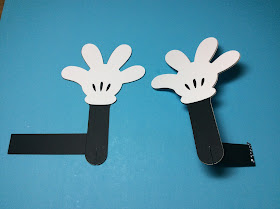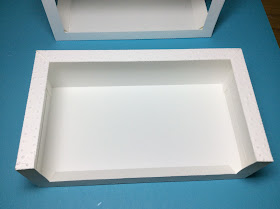A Torus Flower Arrangement in a Slice Form Vase
A Slice Form Vase
These paper-cut flowers are the result of my exploration of torus geometry. Using Silhouette Studio, I adjusted both the edges of the torus and the angles at which its slices come together to create floral forms that reflect the torus’s circular symmetry.
Each enhanced torus slice was cut from cardstock using an electronic paper cutter. The slices were carefully slid into place, and from this assembly, a striking torus flower emerged. Layered petal designs were added to the center of each flower to enhance its visual appeal. The flowers are displayed on stems in a sliceform vase, constructed from flat pieces that slide together to form a sculptural, geometric base.
This project reveals how abstract mathematical ideas can reshape the classical world into something both unexpected and uniquely beautiful.
The entire arrangement when completed is nine inches in height. I have included many sizes of slice form flowers in the .Studio and SVG file. I will not be creating a PDF for this posting as there are too many flowers and combinations of flowers and centers. Please use my arrangement as a guide to make your own special arrangement. It is a very rewarding experience to create such beauty.
Examples of my slice form flowers in the file.
The basis of these flowers was a torus that I modified. The size of each flower can not be altered because the slices need to be a specific size so that the pieces can slide into one another. There are two types of flower, a three slit version and a four slit version. I recommend starting with the three slit version as it is the simplest to put together.
Here is the .Studio file. I used 110 lb. cardstock for the vase and 65lb. cardstock for the flowers.
Here is the SVG.
Make the Vase
Bend the tabs of the buds at a right angle. Glue two of the vase pieces together.
The slice will look like the above photo. Repeat to make six slices.
Please note: The stems will start to bend over time with humidity, weight of the flower etc. In making another vase, I added two additional slices on either side of this original design for a total of four layers for each slice of the vase to compensate for this problem.
Slide the bud slices onto the circle slices. There are five circles with three being small ones. The order of the circles, starting from the top, is small, large, large, small and small
Completed vase
Make the Flowers
These directions are for the modified edged torus. The concept of constructing the Villarcareau circle flower (half moon slice) is the same. Check out this blog posting to see how it was constructed. https://papercraftetc.blogspot.com/2013/10/a-honeycomb-pumpkin-decoration-for-fall.html
There are two types of flower pieces, a upward slit and a downward slit. The pieces are alternated as they are slid into one another and stacked together. There are eight of each type in this three slit design. (There is one flower that has twelve of each type.)
I recommend starting with a center slit as shown above.
Continue adding the slices to create the above pattern.
Once completed, there will be a stack of slices.
I added a hole to each slice so that a thread could be used to make the center of the flower smaller.
Once the thread is sewn through all of the slices, flex the flower into a circle and slide the remaining two slices into one another. Pull the thread tight and knot it. The flower is now ready to be added to your vase.
Assemble the Flowers
Place the flower on the stem.
Make a center for the flower.
Completed center of the flower.
Apply glue to the circular bud area and adhere the center of the flower.
Move the slice form flower to the center of the flower. I added a glue dot to make sure that the flower wouldn't move.
Completed flower with center.
Continue adding flowers until the arrangement is complete.
Completed Flower Arrangement















































































